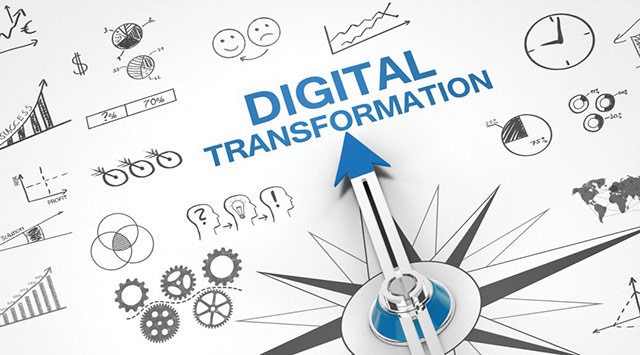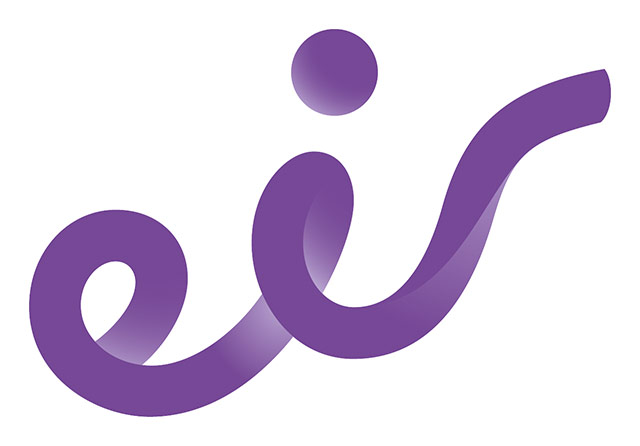Is your Business Digitally Transforming or in Digital Denial?
 Digital transformation is one of those buzz terms that’s been bandied about for several years, but this time it really is happening. Business leaders everywhere recognise that digital transformation is a journey and not a destination, but what does it take to navigate it successfully?
Digital transformation is one of those buzz terms that’s been bandied about for several years, but this time it really is happening. Business leaders everywhere recognise that digital transformation is a journey and not a destination, but what does it take to navigate it successfully?
According to IDC, digital transformation projects will dominate the enterprise landscape in 2016. By the end of 2017, 66 percent of the CEOs of the Global 2000 will have digital transformation at the centre of their corporate strategy. But you know all that. In fact, you’ve already completed your own digital transformation. You’ve set up digital channels and you’re talking to customers online. You launched a mobile app and you enable some of your staff to work from home. You host your email client in the cloud and you use video conferencing for monthly sales meetings. Job done, right? Wrong.
What we’re describing above is the very, very tip of the iceberg. Most organisations have largely focused on the shinier parts of digital transformation – the visible front-end. What most are neglecting are the benefits that digital technologies can bring to the ‘hidden’ areas of business – the operations. At its most fundamental, digital transformation is the application of digital technologies to all aspects of the way a business operates, from the bottom up. In effect, it is the intersection of people, process and information.

So what does a successful digital transformation look like?
We asked Tom Long, Head of Technical Strategy at Cisco Ireland. For him, a successful digital transformation strategy delivers on all three business outcomes: the transformation of business processes to become more agile and cost efficient; the use of technology to improve the customer experience; and the empowerment of the workforce.
According to IDC, key elements in creating such an enterprise-wide digital transformation include “a collaborative culture and a focus on a digital core that embraces analytics and open, agile technologies”. When people talk about technology in relation to digital transformation they often speak about the so-called ‘mega trends’, those technological trends that are so widespread they have disrupted entire processes and even sectors. There are five core mega trends: social, mobile, analytics, cloud and the Internet of Things.
Enterprises around the globe are assessing how to exploit technological developments in these areas to improve the way they work, sell and communicate. Global delivery company UPS is regularly lauded as an example of digital transformation at work. The company tapped into all five mega trends to develop a spectacularly successful digital transformation.
By applying technologies to multiple layers of its business processes, including on-road GPS and analytics for route planning, driver handheld devices with real-time communications and UPS MyChoice for customer self-serve, UPS has enjoyed a dramatic improvement across its operations. Not only has it made savings of the equivalent of eight million gallons of fuel per year, it has also dramatically boosted customer satisfaction and improved workforce engagement as drivers feel a more significant part of the business.
Looking inside as well as out
At the heart of every digital transformation is the development of a digital connected workplace, putting in place the technologies and applications that can make huge differences to productivity and efficiencies.
Work has now become something you do, rather than somewhere you go and the idea of ‘time-slicing’ is becoming more commonplace, where workers break their work day up into slices of time to fit in with their lives. There’s no doubt that employees, typically tech-savvy, highly-mobile Millennials are somewhat setting the agenda. But that’s not a bad thing. In 2014, a Global Perspectives survey placed the UK 18th out of 20 countries surveyed about employee engagement. There’s a job to do here.
But moving to a digital workplace is not a surface-level strategy, throwing bells and whistles at it.
“Adapting collaborative technologies like web-conferencing, enterprise social networks, UC and initiatives such as BYOD and flexible working can certainly help make that move from a disengaged worker to an engaged one,” says Gary O’Brien, Head of Unified Communications at eir Business Northern Ireland. “But there’s more to it than this for it to truly work. It’s a fundamental change that involves infrastructure, security and organisational culture.
“A sound IT network foundation is paramount to success. VoIP, for instance, and the connecting IP network, is the cornerstone for UC to work successfully. HR and IT need to work hand-in-hand to make digital collaboration tools ‘must-have’ not just ‘nice-to-have’. For instance, usage policies and security protocols are fundamental to making sure employees are aware of what is considered safe and acceptable.”
A long-term approach to digital transformation
It’s worth noting that digital transformation isn’t a one-size fits all. Every organisation will have different challenges and needs. So where should you start?
For most businesses, with some digital transformation initiatives already underway, the key is to sustain momentum through a longer-term approach. This requires the right infrastructure – of people and technology. Many companies need to relook at their corporate culture, break down barriers and silos and replace with a more collaborative approach between IT and the business. Some organisations adopt a two-speed IT structure: one to manage the company’s existing operations and legacy systems, another to embrace the new technology and tools to support the transformation initiatives.
Having the right enterprise network is paramount. According to IDC, “success in the digital transformation economy will depend on the ability to build robust ‘data pipelines’ that flow both in and out of the enterprise”.
If your network is down, business is down. It’s that simple. “New digital initiatives can place huge demands on IT infrastructure and threaten to create bottlenecks if an organisation’s network doesn’t have the agility to scale or the ability to integrate with legacy systems,” emphasises Shane Haslem, Head of Network Solutions at eir Business Northern Ireland. “The network is the foundation on which all technological innovation is built on, from e-commerce and analytics, to IoT and mobility initiatives, unified communications and wireless working.”
Tom Long advises organisations to ‘disrupt or be disrupted’. “Any digital transformation comes with risks, whether that’s security, compliance, budget or other elements. It would be easy to say ‘this is too challenging, let’s not do it’. But that would be a mistake. The world of business is moving at such a pace that you can be disrupted very quickly.”
And this isn’t an over-reaction. Many businesses are ‘stuck’ in digital denial, offering an average digital experience. The taxi industry didn’t see Uber coming. The hotel sector wasn’t expecting Airbnb. In Ireland, courier service Nightline took its sector by the scruff of the neck with the launch of Parcel Motel, a network of self-service parcel terminals. All of these highlight just how powerful a transformation strategy can be. Half a century ago, the shelf life of a firm in the Fortune 500 was around 75 years. Today it’s less than 15 years, and declining. Companies, departments, and individuals need to accept the new reality of constant change. Embracing company-wide digital transformation not only creates a culture of creativity and innovation but ensures your business can stay ahead of the game.
Matt McCloskey is Sales & Marketing Director at eir Business NI. Connect with Matt at www.linkedin.com/in/mattmccloskey or call the team to discuss how their managed solutions can work for your organisation’s digital transformation.
eir Business NI
Tel: 028 9000 2100
Web: www.eir.co.uk






